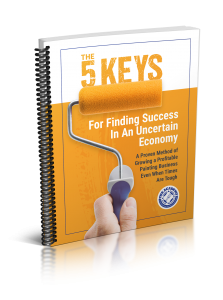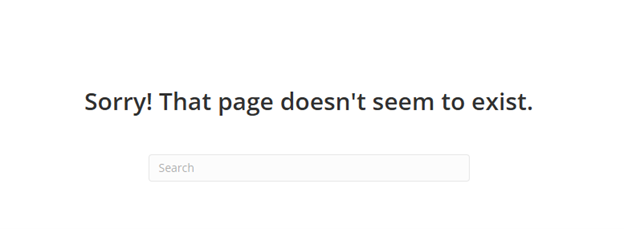Everything You Never Knew You Needed to Know About 404 Pages (And Why They Matter)
Let’s talk about something we’ve all encountered but rarely think about: the infamous 404 page. You know, that annoying message that says, “Oops, this page can’t be found,” when you click on a link? It’s the internet’s equivalent of wandering into the wrong room and realizing you’ve interrupted a private meeting. Awkward, right?
But what if I told you that these little mishaps could hurt your website’s performance if you don’t handle them correctly? Stick with me as we dive into 4 facts about 404 pages that every website owner (even the clueless ones) should know.
Fact 1: Your 404 Page Needs to Return a 404 HTTP Response Code
First things first, your 404 page needs to tell Google it’s a 404 page—sounds obvious, right? Not so fast. If your 404 page accidentally returns a 200 HTTP response code (the code for “everything’s fine here”), Google gets confused. This situation is called a “soft 404.”
What’s a soft 404? It’s like putting up a “closed” sign on your store but keeping the doors wide open. Visitors (and Google) might think your page is still valid, even though it’s empty, broken, or otherwise useless.
Why It Matters: Google’s bots might waste time crawling these “soft 404” pages, thinking they’re legitimate. That’s bad news because it eats into your crawl budget (more on that later).
Fix It: Double-check your 404 pages using tools like Google Search Console or browser extensions to ensure they return the proper 404 HTTP response code. If it’s not working, consult your web developer or a tech-savvy friend who speaks fluent “HTTP.”
Fact 2: Frequent 404 Errors Can Impact Your Crawl Budget
Here’s a fun fact you didn’t know you needed: Google doesn’t have infinite time or energy to crawl every nook and cranny of your website. It uses something called a “crawl budget,” which determines how many pages Googlebot will explore on your site during each visit. If Go
ogle encounters too many 404 errors, it’ll start avoiding those broken URLs like a cat avoids a bath.
Why It Matters: When Google prioritizes crawling error-free URLs, your broken pages fall off the radar. That means new, important content might take longer to be indexed because Google’s busy navigating your site’s error maze.
Fix It: Regularly audit your site for broken links using tools like Screaming Frog or Ahrefs. If you find URLs returning 404 errors, redirect them to relevant pages or update the links so they point to the right place.
Fact 3: Google Ignores Content on 404 Pages (Sorry, No Free Pass Here)
This might surprise you: no matter how witty, charming, or downright hilarious the content on your 404 page is, Google doesn’t care. If a page returns a 404 (or soft 404) error, Google won’t index any of the content on that page.
Let’s break this down: imagine you’ve crafted a brilliant 404 page with a clever joke and helpful navigation links. Your visitors might love it, but Google? It gives you a polite shrug and moves on.
Why It Matters: A 404 page’s sole purpose is to guide users back to working pages. Don’t waste valuable time or resources trying to optimize it for search engines—it’s a dead end as far as Google’s concerned.
Fix It: Focus on creating a user-friendly 404 page with links to popular sections of your site, like your homepage or blog. Think of it as a helpful signpost for lost visitors rather than a content powerhouse.
Fact 4: 404 Pages Nullify Canonical and Noindex Tags
Here’s a nerdy tidbit for the tech-curious: if you’ve added canonical or noindex tags to a page that ends up returning a 404 error, Google completely ignores them. It’s like telling someone to follow your driving directions to a place that doesn’t exist. Naturally, they’ll disregard your instructions.
Why It Matters: Canonical tags (which tell Google which version of a page to index) and noindex tags (which tell Google not to index a page) are useful tools for SEO. But if the page they’re attached to becomes a 404, they’re essentially useless.
Ensure that important pages with canonical or noindex tags are functional and error-free. If a page is no longer relevant, set up a 301 redirect to a more appropriate URL rather than letting it fizzle into a 404.
Why You Should Care About 404 Pages (Even if They Seem Boring)
Here’s the bottom line: 404 pages aren’t just an inevitable annoyance. Handled poorly, they can hurt your site’s performance, waste Google’s time, and frustrate your visitors. Handled well, they can minimize damage, keep users engaged, and show Google you’re running a tight ship.
So, the next time you see a 404 error, don’t shrug it off like an expired coupon. Treat it as an opportunity to clean up your site, improve your SEO, and keep your visitors (and Google) happy.
Need help fixing your 404s? Give us a call at 423-541-2323 or drop us an email at onlineleads@paintersacademy.com and let us help you navigate what needs to get done for you.
The 5 Keys for Success in ANY Economy

Discover the key to unlocking the hidden income potential in your painting business.
Hear What Other Members are Saying:

Jim and Lorraine
“Our first campaign reached $60,041.98! That's a huge percentage of our annual sales! You don't pick the peach orchard just one time. Different peaches ripen every day. Thanks for encouraging us to keep after it!”

Eric
“15 requests for quotes and closed and/or completed $23,000 of work and I still have a few more to do. Conservatively this campaign will net $25,000 in found money in the first 45 days! Thanks Brandon!”

Torlando
“This year has been the biggest year of growth for us. We're double where we were last year. I realized the real money in this business is in the marketing of the services - not the doing of the services.”
The 5 Keys for Success in ANY Economy
Discover the key to unlocking the hidden income potential in your painting business.

